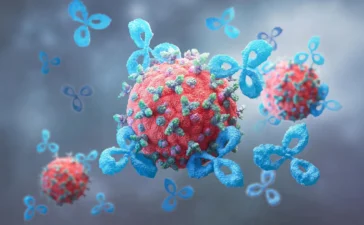New research demonstrates potential for increasing effectiveness of popular diabetes, weight-loss drugs
A network of proteins found in the central nervous system could be harnessed to increase the effectiveness and reduce the side effects of popular diabetes and weight-loss drugs, according to new research from the University of Michigan.
The study, appearing today in the Journal of Clinical Investigation, focused on two proteins called melanocortin 3 and melanocortin 4 found primarily on the surface of neurons in the brain that play a central role in regulating feeding behavior and maintaining the body’s energy balance.
Melanocortin 3 and melanocortin 4 impact everything from sensing long-term energy stores to processing signals from the gut regarding short-term fullness, or satiety, said U-M physiologist Roger Cone, who led the study.
The class of drugs known as GLP-1 agonists, which includes semaglutides (e.g., Ozempic) and tirzepatides (e.g., Mounjaro), have received substantial attention recently for their effectiveness in treating not only type 2 diabetes, but also obesity, heart disease and potentially addiction. They work by mimicking a natural hormone that the gut produces when it is full, triggering the brain to reduce feeding behavior.
“So the obvious question for us was: How do these GLP-1 drugs, which work by manipulating satiety signals, function when we prime the melanocortin system?” said Cone, professor of molecular and integrative physiology at the U-M Medical School and director of the U-M Life Sciences Institute where his lab is located.
Working in mouse models, Cone and his colleagues tested the effects of several hormones that reduce food intake. They compared the results in normal mice with mice that genetically lacked the MC3R protein, in mice that were given chemicals to block the activity of MC3R, and in mice that were given a drug to increase the activity of MC4R. (Because MC3R is a natural negative regulator of MC4R, meaning it decreases the activity of MC4R, blocking MC3R and increasing MC4R activity has similar effects.)
In all cases, Naima Dahir, first author of the study and a postdoctoral research fellow in Cone’s lab, and colleagues found that adjusting the melanocortin system — either by inhibiting MC3R or increasing MC4R activity — made the mice more sensitive to GLP-1 drugs and other hormones that affect feeding behavior. The mice that were given a GLP-1 drug in combination with an MC4R agonist or MC3R antagonist showed up to five times more weight loss and reduced feeding than mice receiving only the GLP-1 drugs.
“We found that activating the central melanocortin system hypersensitizes animals to the effects of not just GLP-1s, but to every anti-feeding hormone we tested,” Cone said.
The researchers also measured activity in parts of the brain thought to trigger nausea in response to GLP-1 drugs and observed no increased activation when GLP-1 drugs were combined with alterations to the melanocortin system. In contrast, priming of the melanocortin neurons significantly increased GLP-1 drug activation of neurons in hypothalamic feeding centers in the brain.
The findings indicate that pairing the existing GLP-1 drugs with an MC4R agonist could increase sensitivity to the desired effects of the drugs by up to fivefold, without increasing unwanted side effects.Ultimately, this approach could enable patients who are sensitive to the side effects to take a lower dose, or could improve the results in patients who have not responded to the existing drug dosages. Further drug development and clinical testing are needed before this can occur.
While this research has been conducted only in mouse models, Cone is optimistic that the results will translate well to humans.
“The melanocortin system is highly conserved in humans,” he said. “Everything we’ve observed in the mouse over the past decades studying these proteins has also been found in humans, so I suspect that these results would also be translatable to patients.”
This research was funded by the National Institutes of Health and Courage Therapeutics.
You Might Also Like
Eating more vitamin C can physically change your skin
Scientists at the University of Otago, Faculty of Medicine -- Christchurch Ōtautahi, have identified a direct connection between how much...
MIT scientists strip cancer of its sugar shield
A research team from MIT and Stanford University has developed a new technique designed to push the immune system to...
This “mushroom” is not a fungus, it’s a bizarre plant that breaks all the rules
In the damp shade beneath moss-covered trees, high in the mountains of Taiwan and mainland Japan or deep within the...
A quantum mystery that stumped scientists for decades is solved
A global research team led by Rice University physicist Pengcheng Dai has verified the presence of emergent photons and fractionalized...









